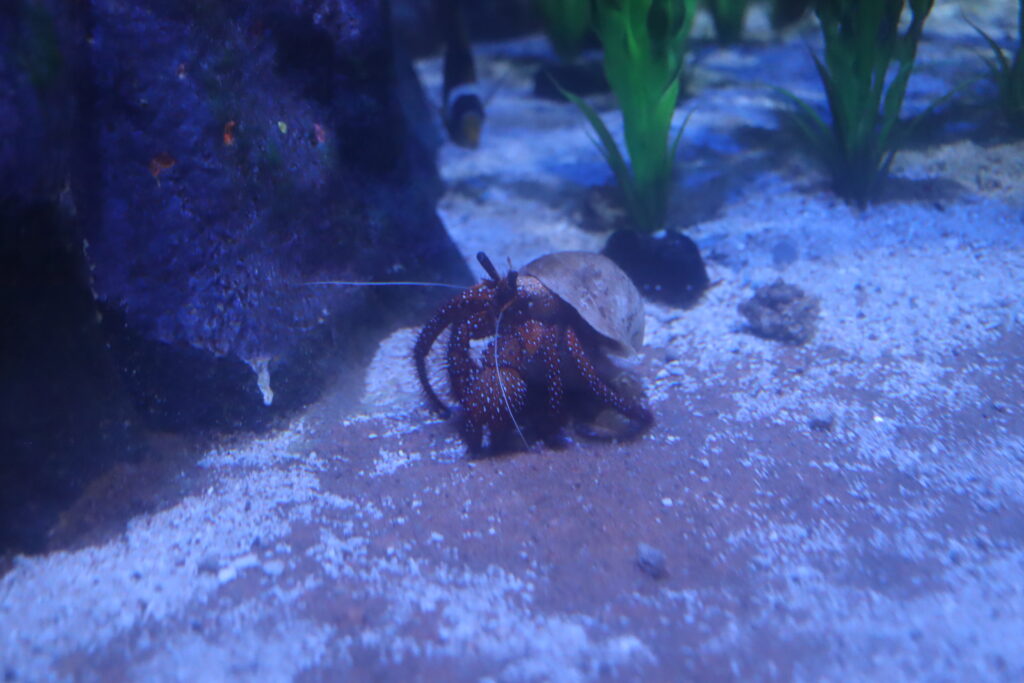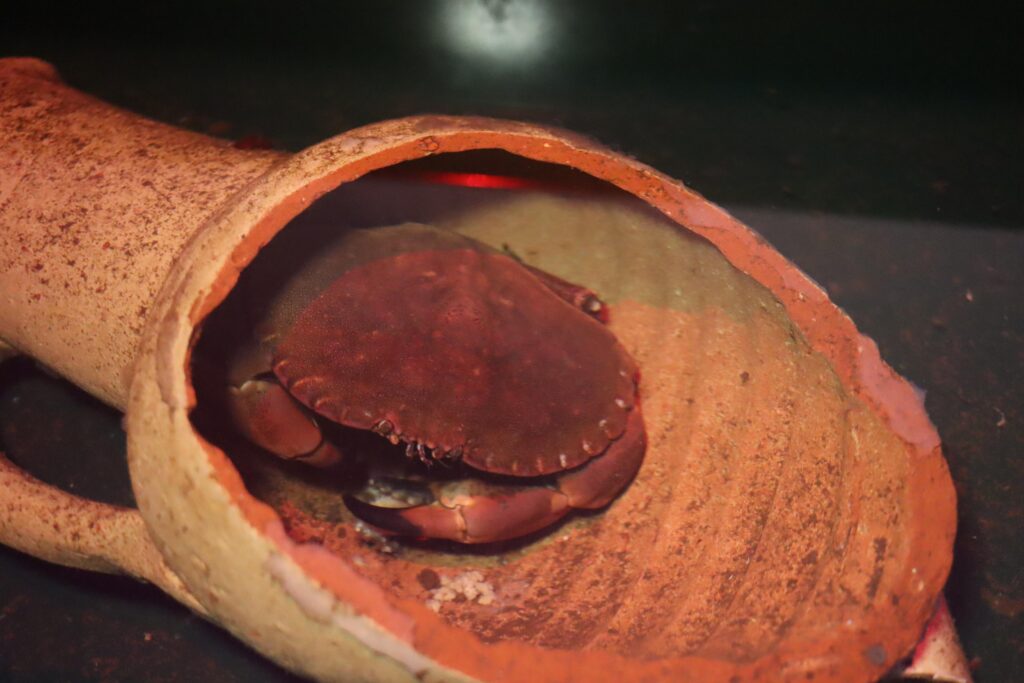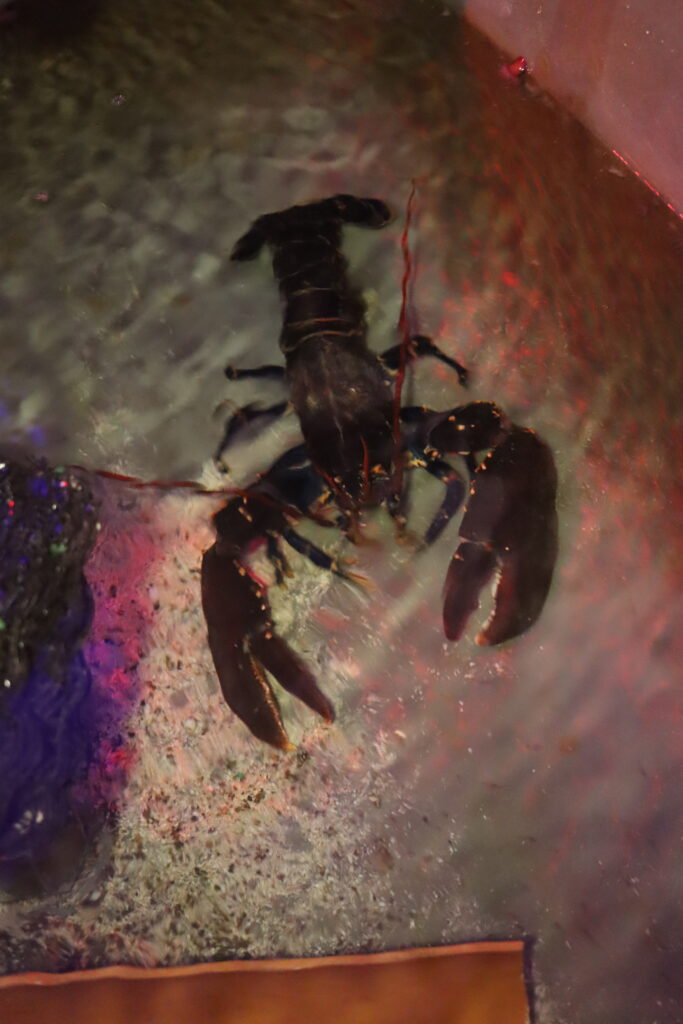Across the world’s oceans there a number of species that often get mistaken for being the same, or at least very similar. After all, if they’re part of the same family, surely they have the same attributes and behaviour? In most cases, this isn’t true – take the lobster and the crab, for example. While they both may appear to be similar creatures, their likeness doesn’t go very far.
So, let’s dive in to the world of crustaceans and find out just what makes these two species stand apart.

Are lobsters and crabs the same?
You’d be forgiven for thinking that lobsters and crab are just two types of one species, given they are similar in colour and both have a hard, outer shell called an exoskeleton. While they are two very different sea creatures, they do share some characteristics.
Both lobsters and crabs are known as decapod crustaceans, which means they have 10 legs. They are invertebrates that are actually closer in relation to arachnids and insects, as opposed to fish. Lobsters and crabs are also just as widespread as each other, often found in every ocean across Earth – crabs are also found in a wider variety of habitats too, which we’ll explain more about later!
Lobsters and crabs also have a similar diet, both being omnivores – this means they’re not picky and will often scavenge for whatever food is available.
However, it is around there that the similarities between these two species ends. Let’s discover some of the most striking differences between lobsters and crabs.

Appearance
Lobsters are part of the Nephropidae family and are characterised by their long bodies and 10 legs, which includes 8 walking legs and 2 pincers. They also have a long tail fan. These crustaceans typically reach between 25-50cm (10-20 inches) in length, and are blue-blooded by nature. This is caused by high levels of copper in their blood, which is the same for other invertebrates like spiders and snails.
While many people assume that lobsters are red, they are in fact generally blue. Some are darker than others, appearing bluish-green or greenish-brown.
On the other hand, crabs are part of the Brachyura family and are typically much wider than lobsters. They have a rounded abdomen, and a hidden tail that lives within its exoskeleton. Crabs come in a huge variety of sizes, from the pea crab that are only a few millimetres, to the Japanese spider crab that can grow up to 3.8m (12.5ft)! Crabs are a colourful species and you might see green, yellow, orange, brown or red crabs.
Habitat
Lobsters are known as bottom-dwellers, which means they tend to live near the ocean floor. They will often find rocky and sandy areas as protection from the more dangerous open ocean. Most lobsters prefer cooler, temperate waters and usually live in saltwater. They move very slowly across the ocean floor, but can speed up to 11mph when under threat. Interestingly, lobsters will move backwards when this occurs!
Crabs have a much more versatile habitat and can be found both in the water and on land. They are more commonly associated with saltwater habitats, but are often found on rocky shores and sandy beaches. For example, the hermit crab lives inside empty sea snail shells on rocky or sandy shores.

You can find both lobsters and crabs right here in the UK – the European lobster for example, while commonly found across the Mediterranean and Red Seas, is also an inhabitant across the UK coast.
Diet
As mentioned earlier, both lobsters and crabs are omnivores and do have similar diets, with just a couple of differences. Both species are not fussy, and lobsters will typically feast on fish, other crustaceans, molluscs, seaworms and marine plant life. They are instinctive scavengers and have even been known to turn to cannibalism when desperate for their next meal!
Crabs have a very similar approach to their diet, feeding on similar food sources to the lobster. However, crabs will also eat the likes of algae and fungi.
Did you know that both lobsters and crabs have a specialised set of teeth called mandibles? They use these to grind and crush their food – lobsters even have an extra set of teeth in their stomachs!
So, while lobsters and crabs are somewhat similar in some respects, they are two very different animals with their own unique features. Why not come and see the European lobster for yourself at our Temperate exhibit?
